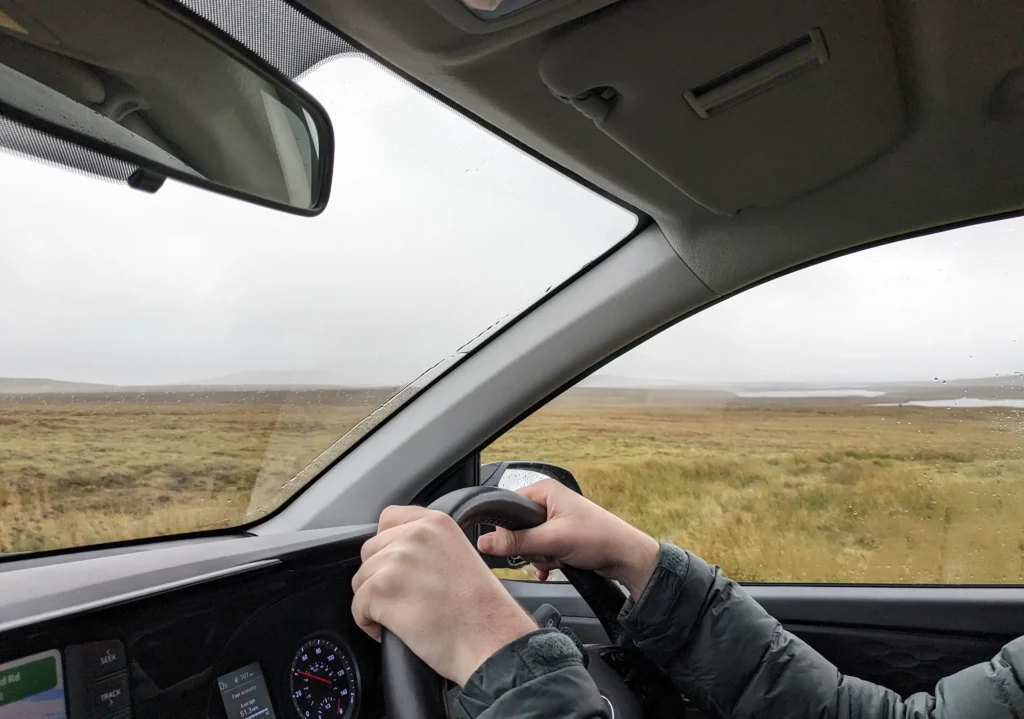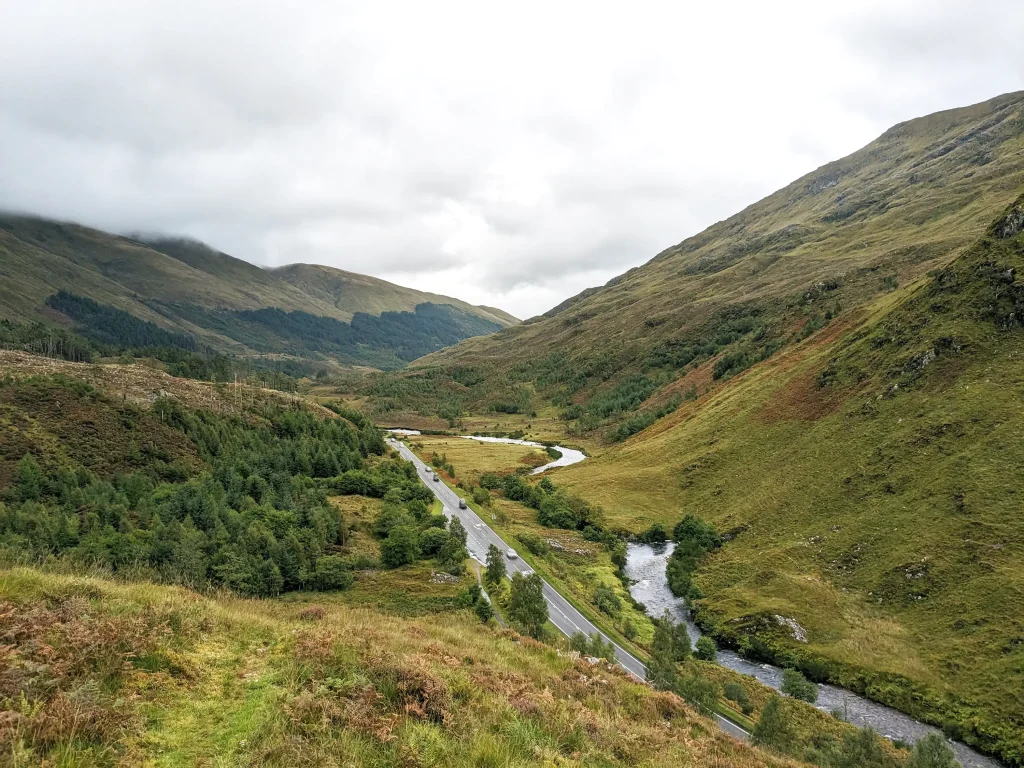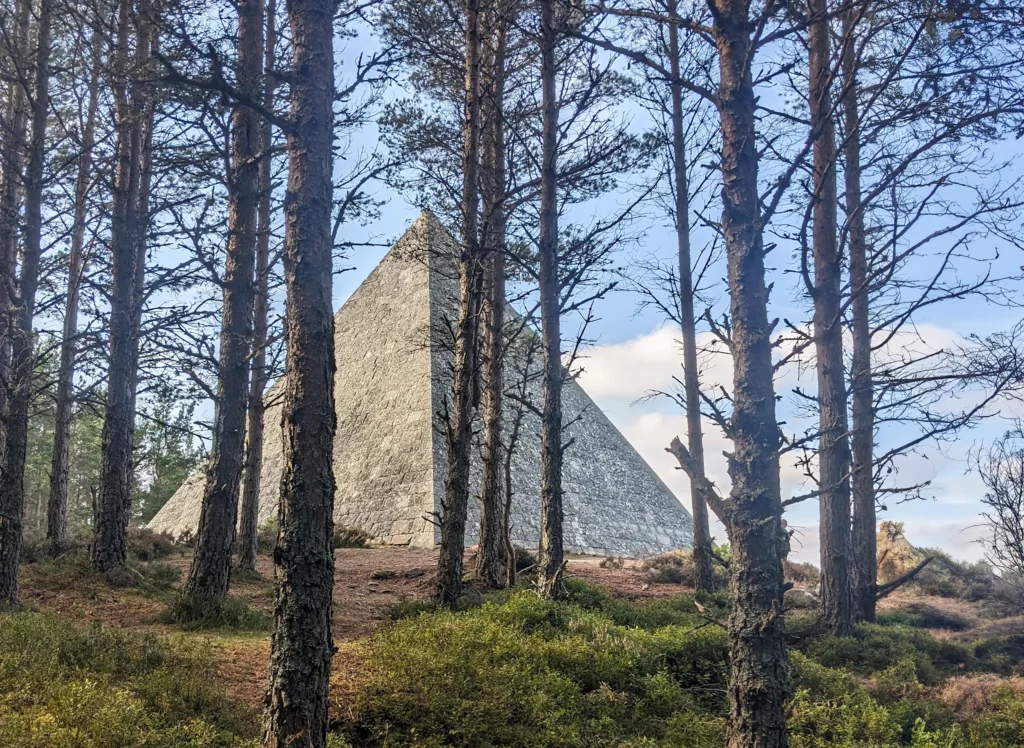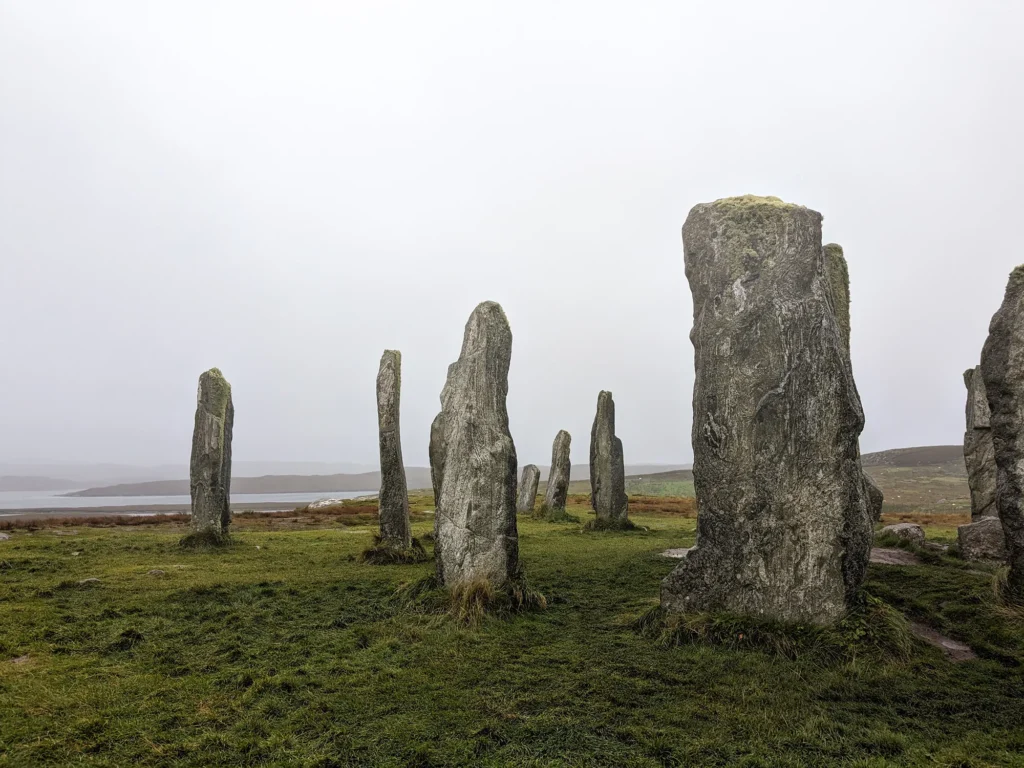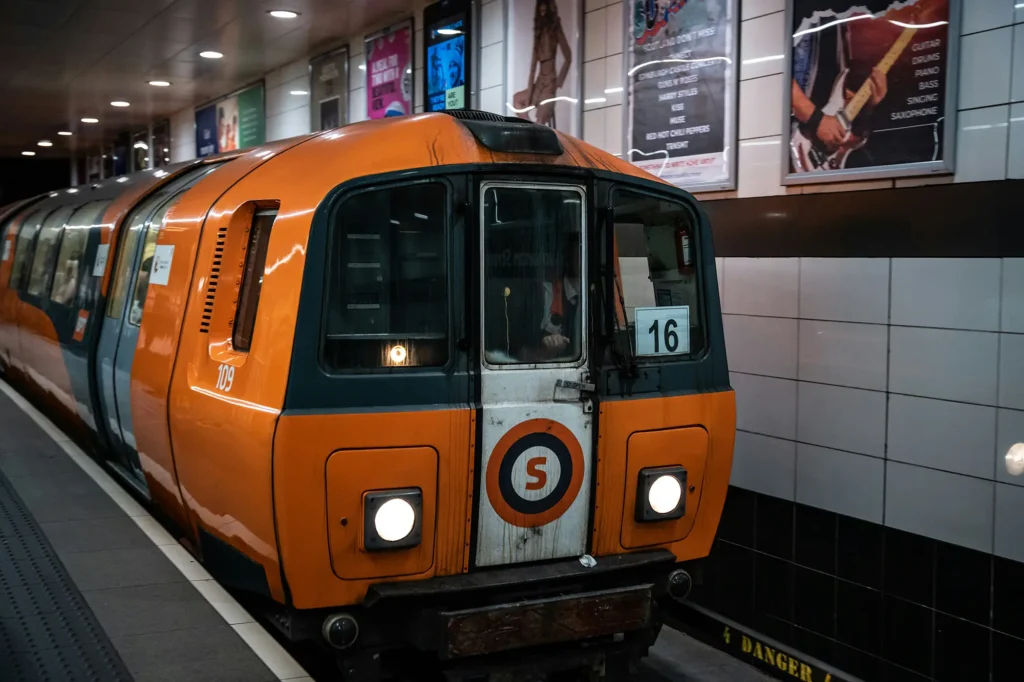Tips to make driving in Scotland easier and less stressful
Hiring a Car in Scotland
Renting a car in Scotland is easy, with major rental agencies available in all the main cities and airports. Both manual and automatic cars are widely available, though automatics tend to be slightly more expensive. If you’re not comfortable driving a manual, the extra cost for an automatic is worth it, especially since you’ll also need to adjust to driving on the left side of the road. However, if you’re used to driving a manual, you should be fine.
Some additional advice is to hire the smallest car you can. While the size will depend on how many people you’re traveling with and your luggage, try to avoid larger vehicles like 4WDs or sedans unless necessary. Scotland’s roads and parking spaces are often narrow, making smaller cars easier to handle. If you’re considering renting a campervan, keep in mind that they can be difficult to navigate on tight rural roads – we saw quite a few motorhomes struggling.
We rented a small car from Arnold Clark and had a great experience, so they’re worth checking out if you’re researching options.
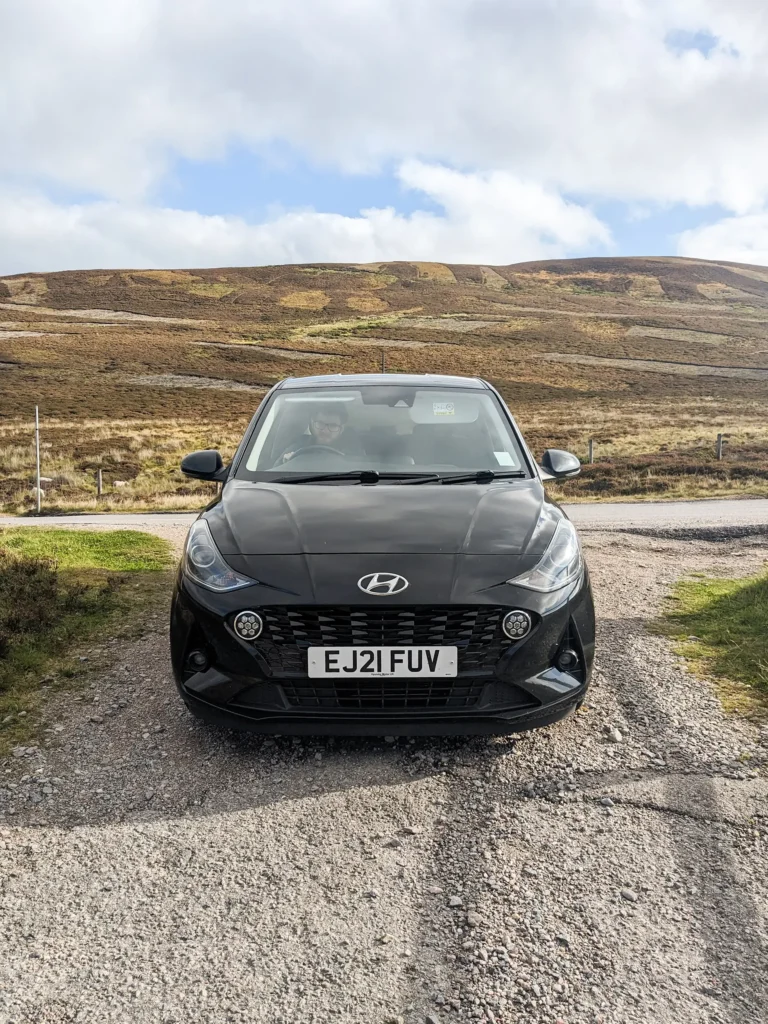
Driving on the Left Side of the Road
In Scotland, you drive on the left side of the road, which will take an adjustment if you’re used to driving on the right. As Australians, we’re used to the left side, but after having to switch to the right in Iceland, here’s some quick advice to help you adjust to driving on the opposite side of the road:
The key is to stay focused and keep your attention on the road. If needed, remind yourself by mentally repeating “left” when making turns or using roundabouts.
Driving around other cars definitely helps also, since the flow of traffic reminds you which side to stick to. It’s the single track roads where you might need to use the ‘left’ chant.
Roundabouts
We found the number of roundabouts in Scotland to be similar to what we’re used to in Australia, but we learned that this isn’t the case in other countries, in particular the U.S. and Canada.
If this is you, I’ve outlined some key tips to help you navigate roundabouts with confidence. I also suggest checking out Conquer Driving’s UK roundabout lesson video – it’s great for visually explaining how to handle roundabouts, and it’s much easier to understand when you can see it in action.
- Approaching the Roundabout:
- Slow down as you approach.
- Be ready to stop for traffic already in the roundabout – they have the right of way.
- Choosing the Correct Lane:
- Left Lane: Use this for the first exit (turning left).
- Right Lane: Use this for the last exit (turning right).
- Middle Lane: Use this if you’re going straight ahead.
- Using Turn Signals:
- Signal Left: When taking the first exit.
- Signal Right: When taking the last exit.
- No Signal: If going straight, signal only when you’re about to exit.
- Staying in Your Lane:
- Stick to your lane once you’re in the roundabout until it’s time to exit.
- Stick to your lane once you’re in the roundabout until it’s time to exit.
- Exiting the Roundabout:
- Signal left as you approach your exit to let others know you’re leaving.
- Signal left as you approach your exit to let others know you’re leaving.
- Missed Your Exit?
- Don’t worry – just go around the roundabout again until you reach the correct exit.
Traffic Lights
When you first arrive in the UK, you might notice something different about the traffic lights. They have four stages instead of the usual three. Here’s what each light means:
- Red Light: This means you must stop.
- Red and Amber Together: This means the light is about to turn green, so get ready to go.
- Green Light: You can go when the light is green, but watch out for other drivers and pedestrians.
- Amber Light Only: This means the light is about to turn red, so you should start slowing down and get ready to stop.

Single Track Roads
A single-track road is a type of road commonly found in rural and remote areas. They’re usually very narrow, only wide enough for one vehicle at a time, meaning there isn’t enough space for two vehicles to pass each other comfortably. because of this these roads won’t have any lane markings.
Driving on single-track roads requires patience and awareness, as you need to navigate carefully and use passing places to manage oncoming traffic.
To accommodate oncoming traffic, single-track roads have designated “passing places” where vehicles can pull over to allow others to pass. These passing places are spaced out along the road and are usually marked with signs. Along main roads these will be marked with signage, but there won’t always be signs but will be worn spots people use to pull over.
To learn more, read my complete guide to using passing places in Scotland.
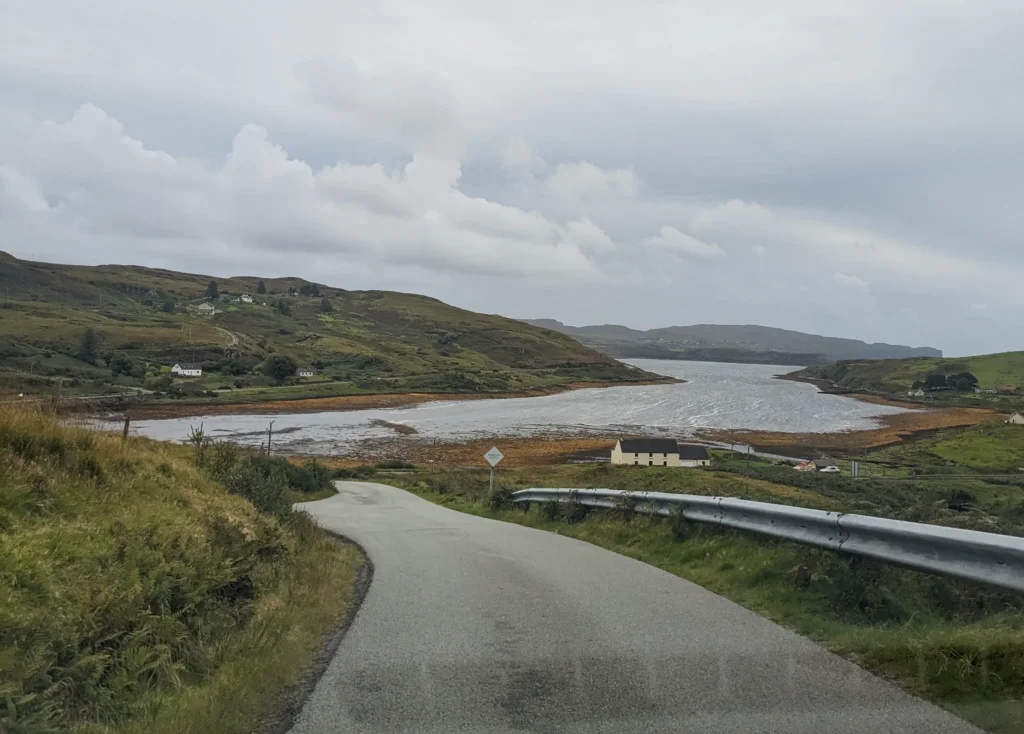
Damaged/unsealed roads
While most main roads in Scotland are paved, you might come across gravel roads, especially in rural areas. These roads are often less maintained and can have potholes, particularly on the Isle of Skye, where the weather really takes a toll.
Even though we had a small car, we were able to navigate these roads without any damage by simply slowing down and carefully steering around the potholes.
Fuel
Fuel stations are easy to find in cities and bigger tourist towns, but they can be hard to come by in rural areas, so it’s smart to plan your stops ahead of time. Google Maps is good for finding fuel stations along your route, including their hours of operation.
For instance, before we left Glasgow and headed into the Highlands, we made sure to fill up our tank. This not only gave us peace of mind about how far we could get but also saved us money—petrol was cheaper in Glasgow than further north in Fort William.
During our trip, petrol prices averaged around £1.50 per litre. For the latest prices, it’s worth checking the UK Fleet News website. We also noticed that the cheapest fuel was often at stations owned by supermarket chains like Tesco, Morrisons and Sainsbury’s.
Parking
Many free attractions, like the Old Man of Storr and the Fairy Pools on Skye, have paid parking. Additionally, in Edinburgh and Glasgow, and tourist towns like Fort William and Portree, you often have to pay for parking, and finding a spot can take time. Prices can vary, so be prepared to pay, or consider walking or using public transport. That’s what we did in Glasgow – we left our car at the hotel where we had already paid for parking and used the Glasgow Subway to get around for the day.
You’ll usually find a parking kiosk where you can choose how long you want to stay and then place the ticket on your car’s dashboard – referred to as ‘pay and display.’ Every kiosk we used accepted both credit cards and cash.
Over our 9-day trip, we spent £17 on parking – not a huge amount, but enough to cover a meal at a Scottish chippy.
Livestock
Across Scotland, especially in rural areas and on single-track roads, animals are common road hazards. These animals often roam freely, so it’s not unusual for them to wander onto the road unexpectedly. This is especially true in remote areas where fences may not always be present or maintained. During our trip we came across groups of sheep and highland cows grazing along the edge of the road.
Scotland does also have some wildlife you may encounter, especially around dawn and dusk when visibility is lower. These animals include deer, rabbits and red foxes.
To avoid accidents, you need to stay vigilant and be prepared to stop quickly if you spot any animals near or on the road.
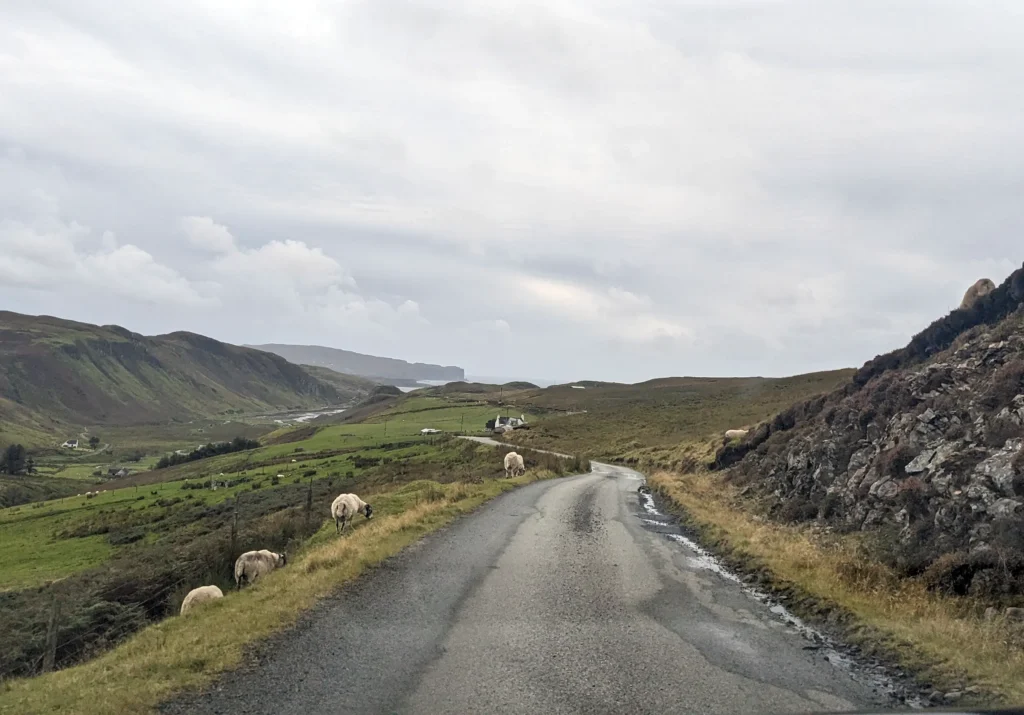
Preparing for the Weather
Scottish weather is famously unpredictable. We got to experience it all, sunshine, fog, rain and gale force winds (and all in the space of a two hour hike!)
And because of how unpredictable it is you need to be prepared to be driving in each of these conditions (plus snow in the winter).
Like most standard driving practices remain cautious – slow down when there’s reduced visibility or wet roads and not taking risks by finding a safe place to pull over if the weather becomes severe. We kept our headlights on at all times to be safe.
You’ll find the weather especially unpredictable along coastal and exposed areas, like the Isles.
Don’t Trust Google Maps for timeframes
If Google estimates a 2-hour drive from Edinburgh to Inverness, expect it to take closer to 2.5 hours. Narrow, winding single-track roads can easily add to your travel time. Plus, Google assumes you’ll be driving at the speed limit, which might be unrealistic for non-local drivers, which can make the trip even longer.
It’s wise to give yourself extra time if you’re on a tight schedule.
You may not always have reception
You may not always have cell reception, especially in parts of the Highlands and on the Isle of Skye. We occasionally found ourselves in areas with no signal, causing our GPS to drop out. Although the signal usually came back quickly so we didn’t have any big problems, it’s a good idea to download maps ahead of time if you plan to head off the main roads.
Google Maps also worked without cell phone service (which was rare), as long as I input the destination before I lost service.
